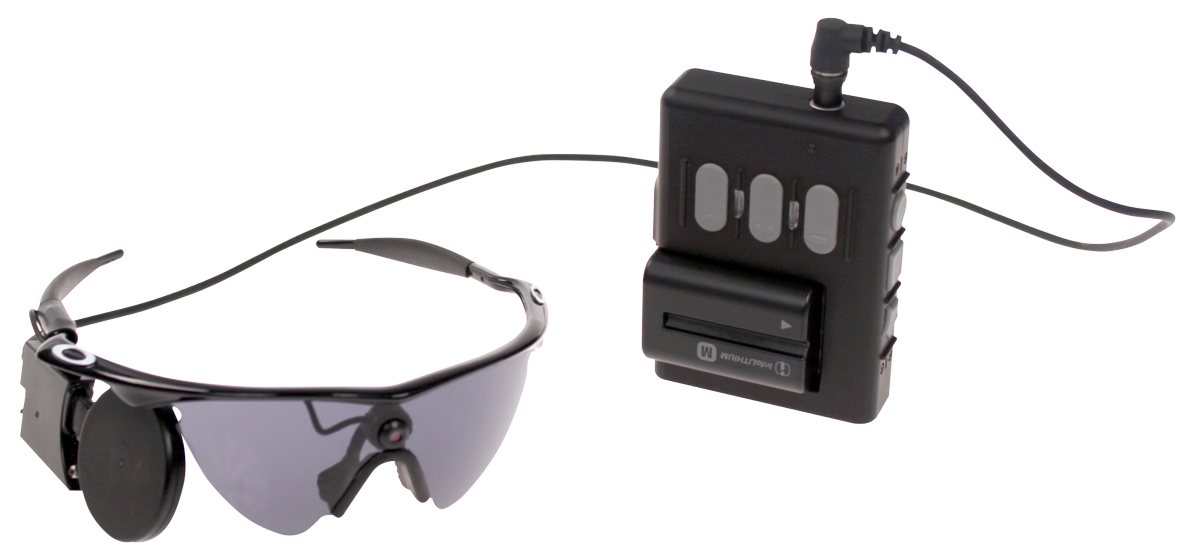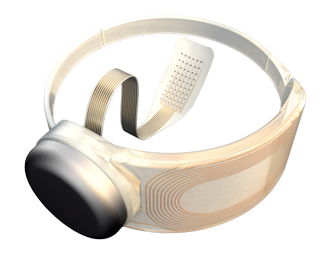Bionic Eye Turns Off the Dark

The first bionic eye approved for patients may fall far short of science fiction fantasies, but it can restore some vision to those who are completely blind.
The Argus II bionic eye resembles futuristic glasses combined with a cyborg eye implant — a system that transforms video camera images into electrochemical signals for the brain to interpret. It received European regulatory approval in 2011 and is now awaiting approval from the Food and Drug Administration for use in U.S. patients suffering from a degenerative eye disease.
"Ten or 20 years ago, people wouldn't think of the possibility of a bionic eye, and now it's something that is possible," said Grace Shen, director of the retinal diseases program at the National Eye Institute.
The National Eye Institute represents one of several federal agencies, including the Department of Energy and the National Science Foundation, that combined to invest more than $100 million in research leading up to the development of the Argus II. The bionic eye's creators at Second Sight Medical Products Inc. also relied on $100 million in private funding.
"All our clinical-trial patients were previously blind. Everyone was able to see something" with Argus II, said Brian Mech, Second Sight vice president of business development.

Giving back second sight
The 30 patients in one recent clinical trial all had retinitis pigmentosa, a rare, genetic eye disease that leads to the loss of the light-sensitive cells known as rods and cones. But Argus II bypasses the problem in two main steps.
Sign up for the Live Science daily newsletter now
Get the world’s most fascinating discoveries delivered straight to your inbox.
First, a vision-processing unit worn by the Argus II user converts the glasses' video camera images into just 60 pixels (or points) of visual information. Second, the information is transmitted wirelessly to the bionic eye implant, so that its 60 implanted electrodes can electrically stimulate a layer of healthy retinal cells that transmit the signals through the optic nerve to the brain. [Video: Cyborg Roaches Strut Their Stuff]
Argus II allowed most of the patients to see well enough to locate objects, doors and windows in a room and turn in the direction of motion. About a quarter even regained enough sight to read alphanumeric characters the size of newspaper headline letters. Such results encouraged an FDA advisory panel to vote 19-0 last October on the likelihood that the benefits off the bionic eye outweigh the health risks.
"Patients in clinical trials have been using the device for six years," Mech told TechNewsDaily. "In vitro bench testing has shown the device has a lifetime of at least 40 years. Our intent is for the device to last the lifetime of the patients."
Beyond bionic eyes
FDA approval of Argus II would be only for use in about 100,000 Americans with retinitis pigmentosa. Both Shen and Mech said bionic eye technology similar to Argus II might someday help millions of other Americans who suffer from a certain type of age-related macular degeneration, the leading cause of severe vision loss in adults over the age of 50.
But the more ambitious idea of restoring full 20/20 vision to the blind still poses huge challenges, Mech cautioned. Better visual resolution would require possibly millions of tiny electrodes implanted to stimulate millions of retinal cells. The overload of electrical stimulation within a small area could threaten to kill cells.
Instead, Second Sight wants to improve its bionic eye system by boosting the hardware and software used externally in the glasses and vision-processing unit, so that the Argus II users don't need to undergo new surgery for better implants. The company also has begun working on next-generation bionic eye implants with greater numbers of electrodes.
The National Eye Institute is looking at solutions for blindness beyond bionic eyes, Shen said. Stem cells might help regenerate retinal cells. Optogenetics could insert certain genes to make normally blind cells in the eye capable of detecting light. Some "photoswitch" chemicals can temporarily make "blind" cells sensitive to light when injected into the eye.
"Even though Argus II is one of the successful solutions that came all the way close to FDA approval, we're giving a lot of funding for other ideas as well," Shen said.
This story was provided by TechNewsDaily, sister site to LiveScience. Follow TechNewsDaily on Twitter @TechNewsDaily, or on Facebook.













